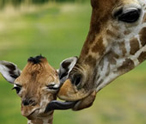Did you ever feast your eyes on the amazing phenomenon of birds flying in V formation? The distinctive v-shaped flight pattern of migratory birds has long puzzled researchers and it continues to attract both scientific and popular attention. Here, in addition to exploring the causes and dynamics of v-type flight pattern, we’re presented a list of the birds that fly in v formation.
Seasonal migration is common among birds. Some birds travel for thousands of kilometres during migration. For example, the Arctic tern which is known for the longest migration covers the distance of around 90,000 kilometres in its pole-to-pole round trip every year.
Mechanics and Benefits of Flying in V:
During migration, many bird species form highly organized groups and follow a distinctive flight pattern to make their long flights less tiresome and more successful. One of such patterns is v formation. Why do birds fly in V configuration? Such specialized configurations allow them to reduce energy expenditure as well as improve locomotor performance of individual birds in the assemblage.
Studies reveal that birds flying in a V are pulling off a highly complicated and impressive feat. As a bird flaps wings, a rotating vortex of air rolls off each of the tips of its wings. As a result, the air immediately behind the bird undergoes downwash, i.e. it gets constantly pushed downwards. And the air behind it and off to the sides faces upwash, i.e. it gets pushed upward. In this way, upwash and downwash zones are created which can affect the flight of its flock-mates.
For example, a bird flying in the upwash zone gets free lift. It can reduce energy expenditure by mooching off the air flow produced by its group fellow.
In an attempt to provide an empirical evidence to back up the claim that birds flying in a V save energy, Henri Weimerskirch of French National Centre for Scientific Research conducted an experiment on pelicans in 2001. Henri and his colleagues fitted heart-rate monitors under the feathers of 8 trained pelicans.
He came up with the amazing discovery that birds in the front of the V formation flight had faster heart rates than those at the back, and they had to flap more often. In contrasts, those at the back has slower heart rates and flapped less often.
The individual energy savings for birds flying in a V have been estimated to be 12 to 20 percent compared with solo flights (flying alone).
List of Birds That Fly in V Formation:
Flapping wings redistributes the air around the bird, leaving whirling eddies behind. Some migratory bird species fly in wedge or v-shaped pattern to take full advantage of this upwardly spinning air. Here is the list of birds that fly in V formation.
- Canada Goose: A gregarious bird species, the Canada geese fly in wedge-shape pattern which allows them to travel at an easier pace throughout their flight. Studies have revealed that geese flying in v-formation can travel as much as 70% farther than they could otherwise.
- Northern Bald Ibises: Flying in a V flock, the northern bald ibises (Geronticuseremita) organize themselves in aerodynamically optimum positions. These big-winged flying creatures carefully orient their wingtips and synchronize flapping to catch the preceding bird’s updraft. It helps them make their flight easier and save energy.
- Tundra Swans: Flying in v-shaped configuration, the leader of tundra swan flocks has the hardest work to do as it has to break the trail. However, the birds following it in a V travel at an easier pace. It is because the resistance of air goes on decreasing as each bird flies in the widening wake (upwash zone) of its predecessor. Fortunately, the leader of the flock is relieved in frequent intervals. To put a different bird at the head, the flocks of tundra swans constantly fracture and reassemble their configurations.
Other Birds flying in a V:
- American White Pelican
- Snow Goose
- Sandhill Crane, etc.
Do you know about any other bird fly in v formation? If yes, then let us know so that we can add in our list of Birds That Fly in V Formation.
Latest Mammals

Types Of Goats
Goat is a mammal that belongs... read more

Goat Facts
A domesticated form the wild goat of...read more

Giraffes Facts
Giraffes are creatures with extremely...read more
Latest Birds

Victoria Crowned Pigeon
With its name...read more

Information About Flamingos
Flamingos are...read more

Hoopoe Bird
Famous for its distinctive crown of...read more

Roseate Spoonbill
The beautiful Roseate Spoonbill...read more
























Largest Birds of Prey in the World by Size and Weight
Also called raptors, the birds...
List of Birds That Fly in V Formation
Did you ever feast your eyes on the amazing phenomenon...
Birds of Prey List
A bird of prey is also known as a raptor or a hunter. It belongs to the group of...
Millipedes Vs Centipedes
Centipedes and millipedes are both arthropods from the group...
Difference Between Warm Blooded and Cold Blooded Animals
Every living organism...
Top 10 Extremely Dangerous Insects
The insects have been grouped in class 'insecta' of...
Sheep Vs Goat
The goat and the sheep are related to each other through the same family. They...
Animals with Blue-colored Blood
Humans and other vertebrates have red-colored blood running...
Birds, Mammals And Reptiles
Before coming to the question of common ancestry of birds...